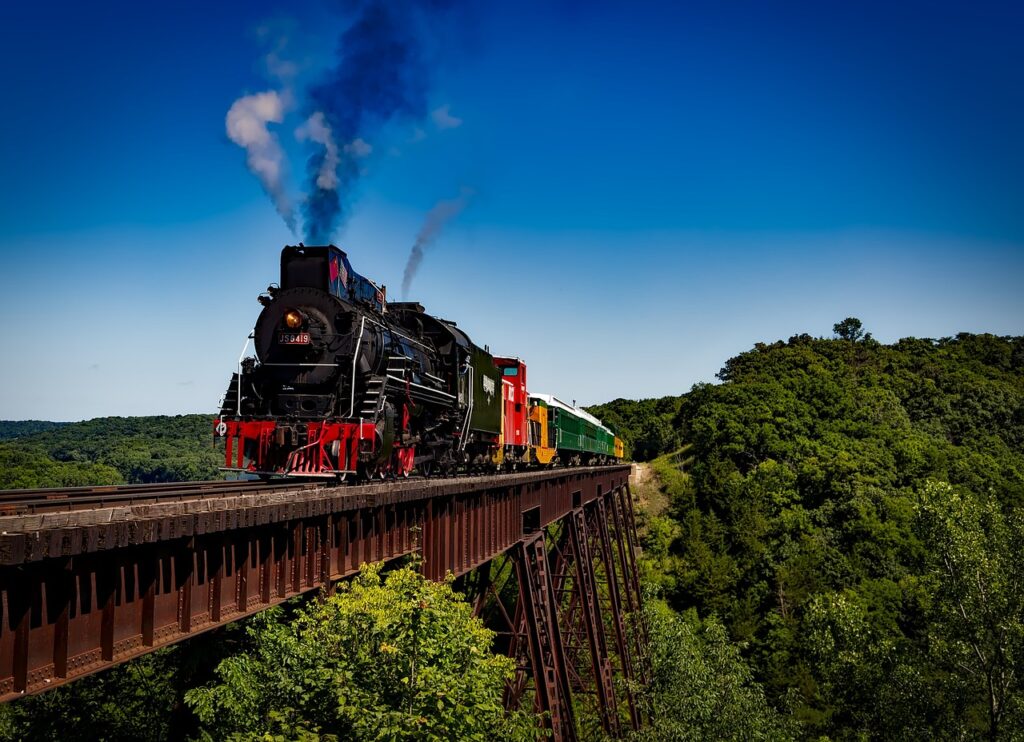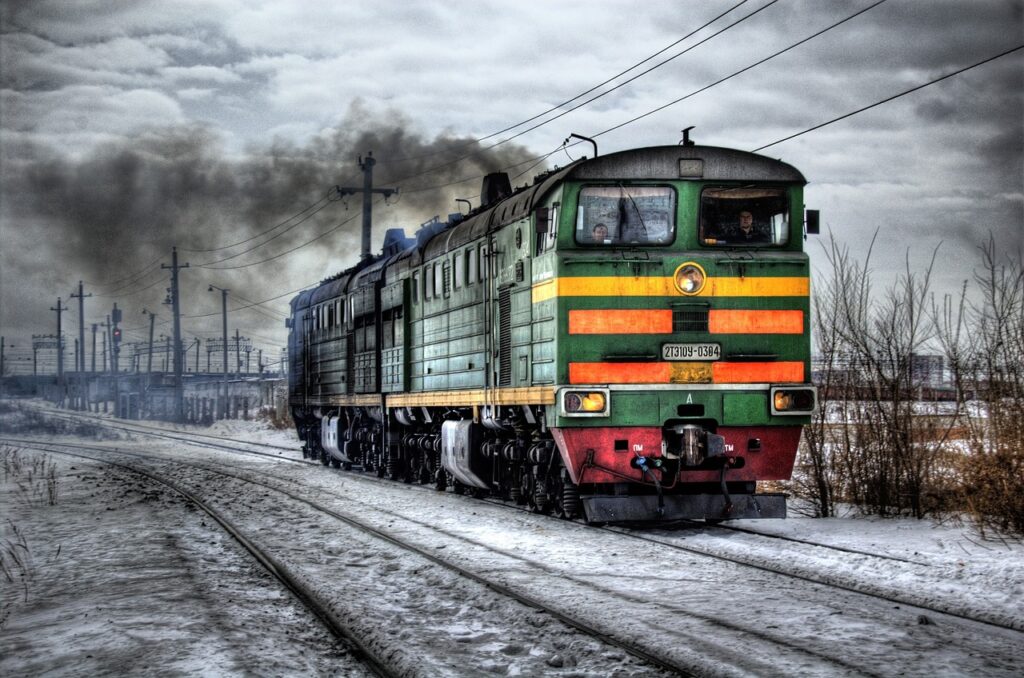How did Steam Locomotives Lower the Cost of Transporting Raw Materials and Finished Goods?
The Industrial Revolution on Rails – Unlocking Economic Prosperity through Innovation
The advent of steam locomotives during the Industrial Revolution revolutionized the transportation industry, opening up a world of economic possibilities. These powerful machines introduced a faster, more efficient, and cost-effective means of moving raw materials and finished goods across vast distances. We explore how steam locomotives lowered the cost of transporting raw materials and finished goods, fueling industrial growth and transforming economies on a global scale.
1. Speed and Efficiency

Before the era of steam locomotives, transporting goods overland was slow and labor-intensive. Horse-drawn carts and wagons were the primary means of moving goods, limited by the speed and endurance of the animals. With the introduction of steam locomotives, goods could be transported at much higher speeds, covering long distances in a fraction of the time. This newfound efficiency reduced the time needed to transport raw materials from mines and farms to factories and deliver finished goods to markets.
2. Increased Capacity
Steam locomotives significantly increased the carrying capacity of goods that could be transported in a single journey. Traditional transportation methods, such as horse-drawn carts, had limited space for goods. In contrast, steam locomotives pulled multiple freight cars, allowing for much larger quantities of raw materials and finished products to be transported in a single trip. This increase in capacity translated to economies of scale, reducing the cost per unit of transportation and enhancing profitability for businesses.
3. Expansion of Markets

With steam locomotives facilitating faster and more efficient transportation, markets expanded as businesses could reach new customers in distant regions. Previously isolated areas were connected through rail networks, promoting trade and economic growth across regions. This expanded reach allowed for the distribution of goods on a national and international scale, leading to increased demand and further lowering costs through larger volumes of trade.
4. Lowering Shipping Costs
In the early 19th century, waterways were the primary means of transporting goods over long distances. While effective, water transport was limited to navigable rivers and oceans. Steam locomotives provided a more flexible and versatile solution, as they could operate on land without being restricted by geography. This advantage allowed businesses to transport goods to and from areas without direct access to waterways, reducing the need for costly transfers between different modes of transport.
5. Stimulating Industrialization
The cost-effectiveness of steam locomotives played a pivotal role in accelerating industrialization. Access to inexpensive raw materials and a reliable means of transporting finished goods to markets enabled industries to scale up production and become more competitive. This surge in industrial activity led to increased employment opportunities, higher wages, and improved living standards for many, transforming societies and economies.
6. Development of Regional Specialization

Steam locomotives encouraged the development of regional specialization, as goods could be efficiently transported from areas with abundant resources to regions with specific manufacturing capabilities. For example, raw materials such as coal and iron ore could be transported to industrial centers, and finished goods like textiles could be distributed to consumer markets. This specialization boosted efficiency, reduced costs, and improved overall economic productivity.
The rise of steam locomotives was a game-changer that reshaped the transportation landscape and transformed the global economy. By providing a faster, more efficient, and cost-effective means of transporting raw materials and finished goods, steam locomotives stimulated industrial growth, expanded markets, and lowered the cost of goods for consumers. The impact of these revolutionary machines during the Industrial Revolution continues to reverberate through modern-day logistics and transportation, demonstrating the enduring legacy of innovation on economic prosperity.